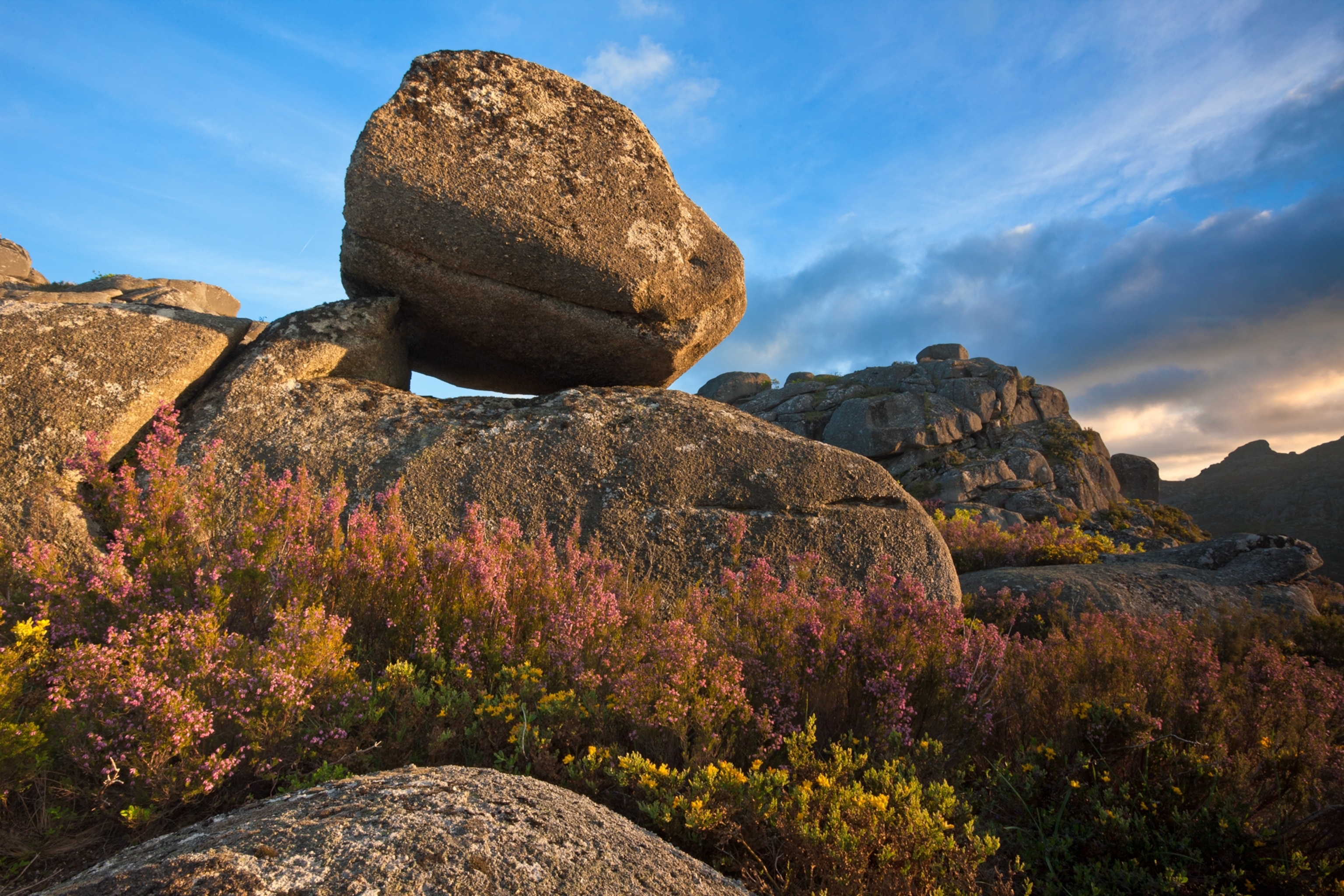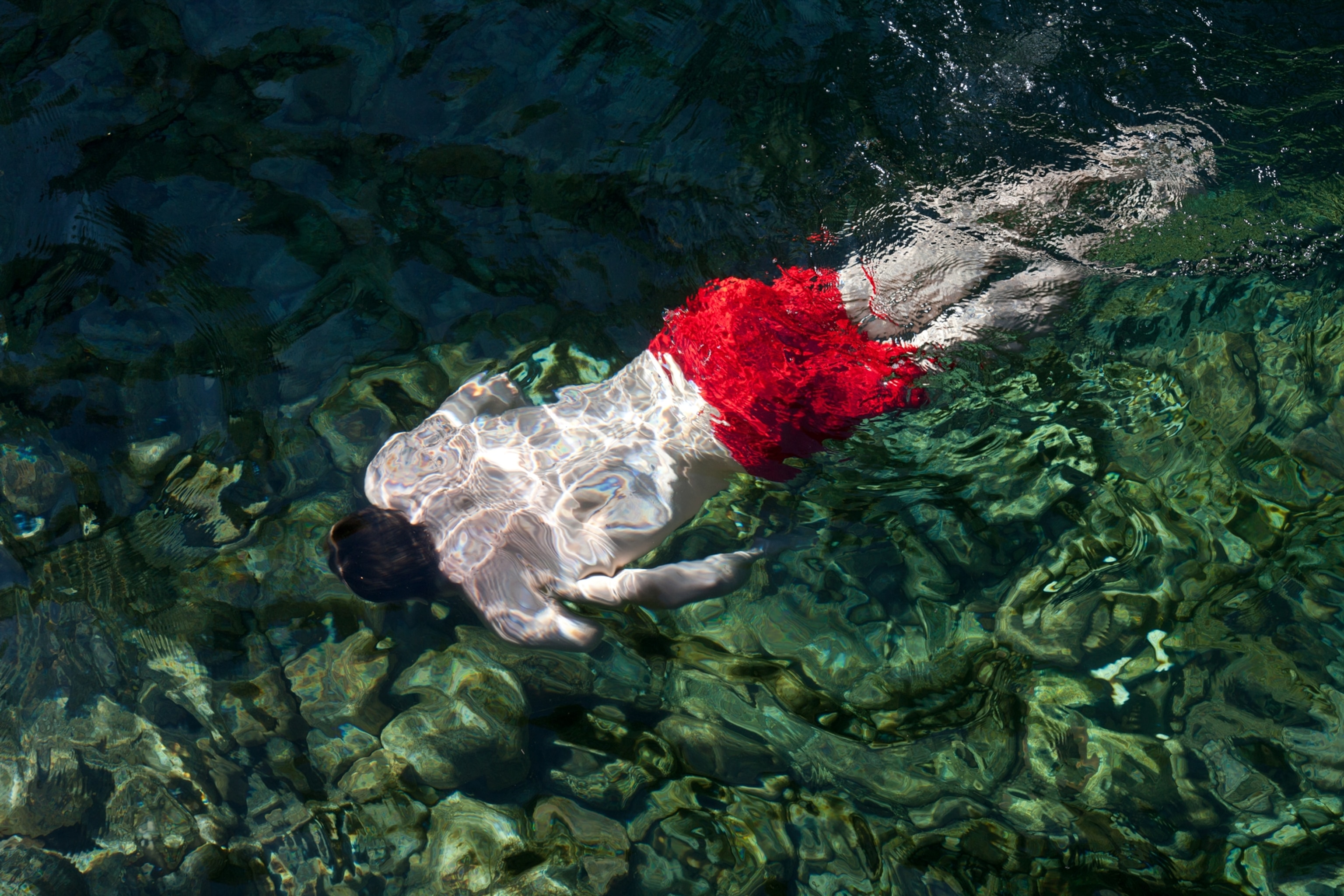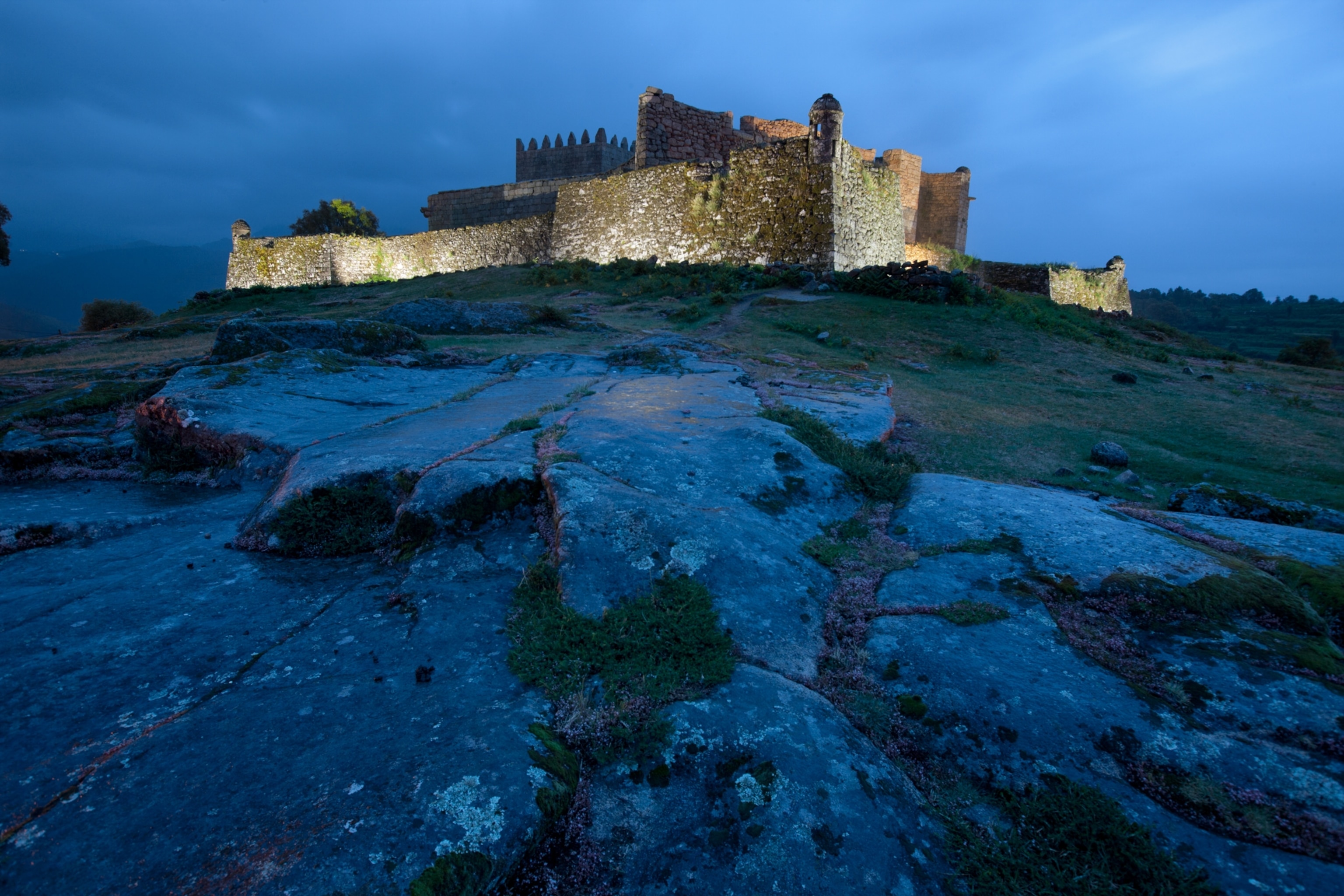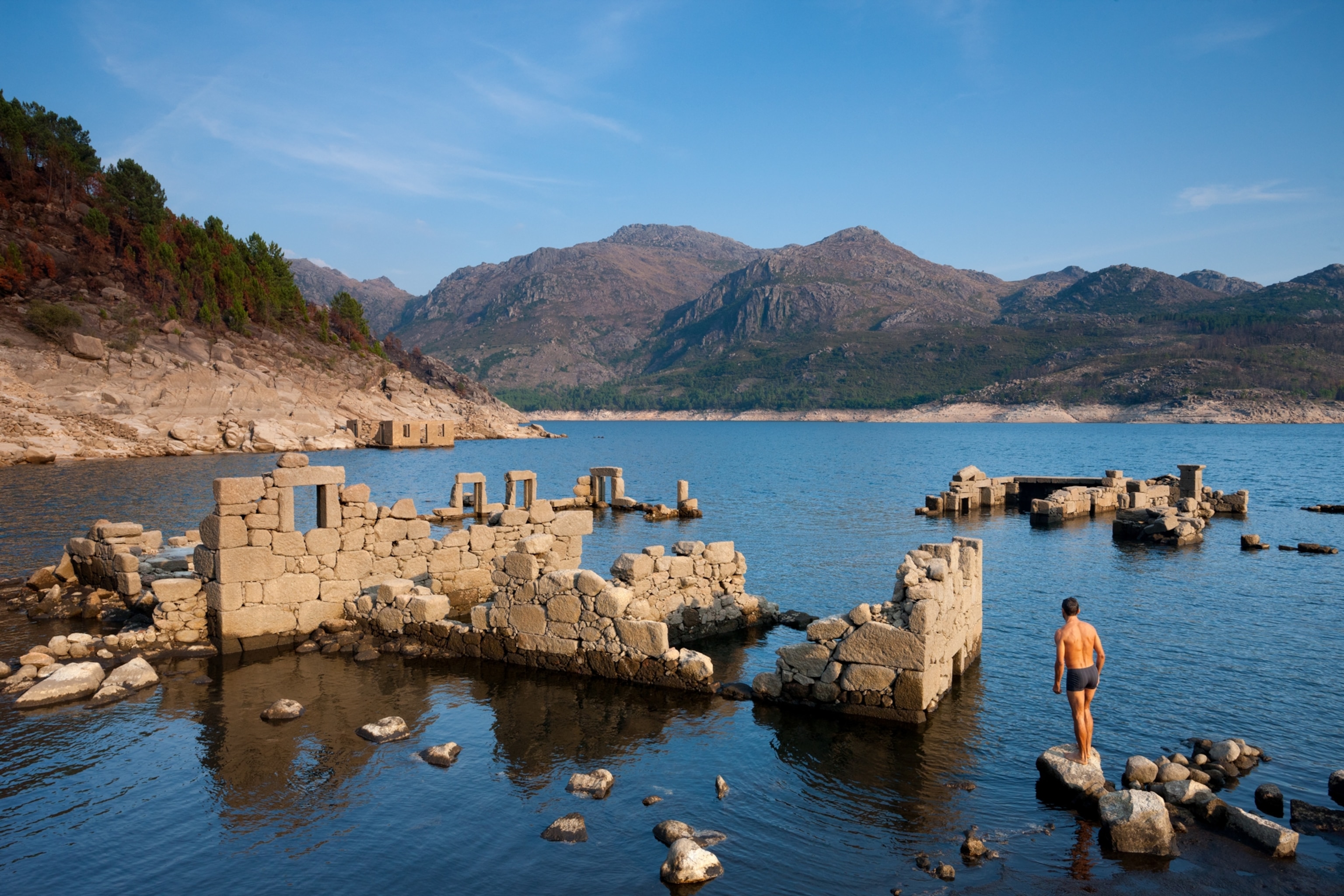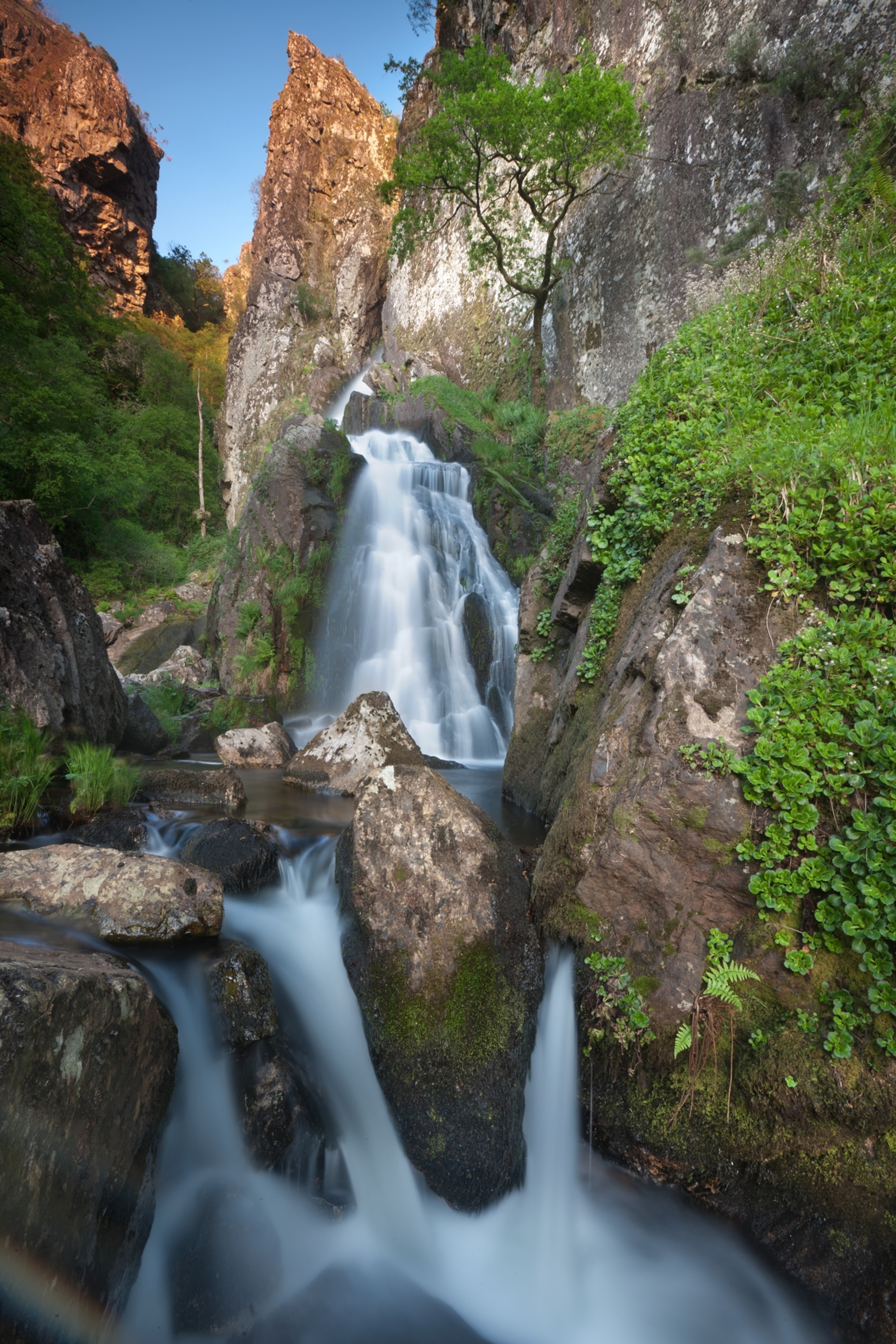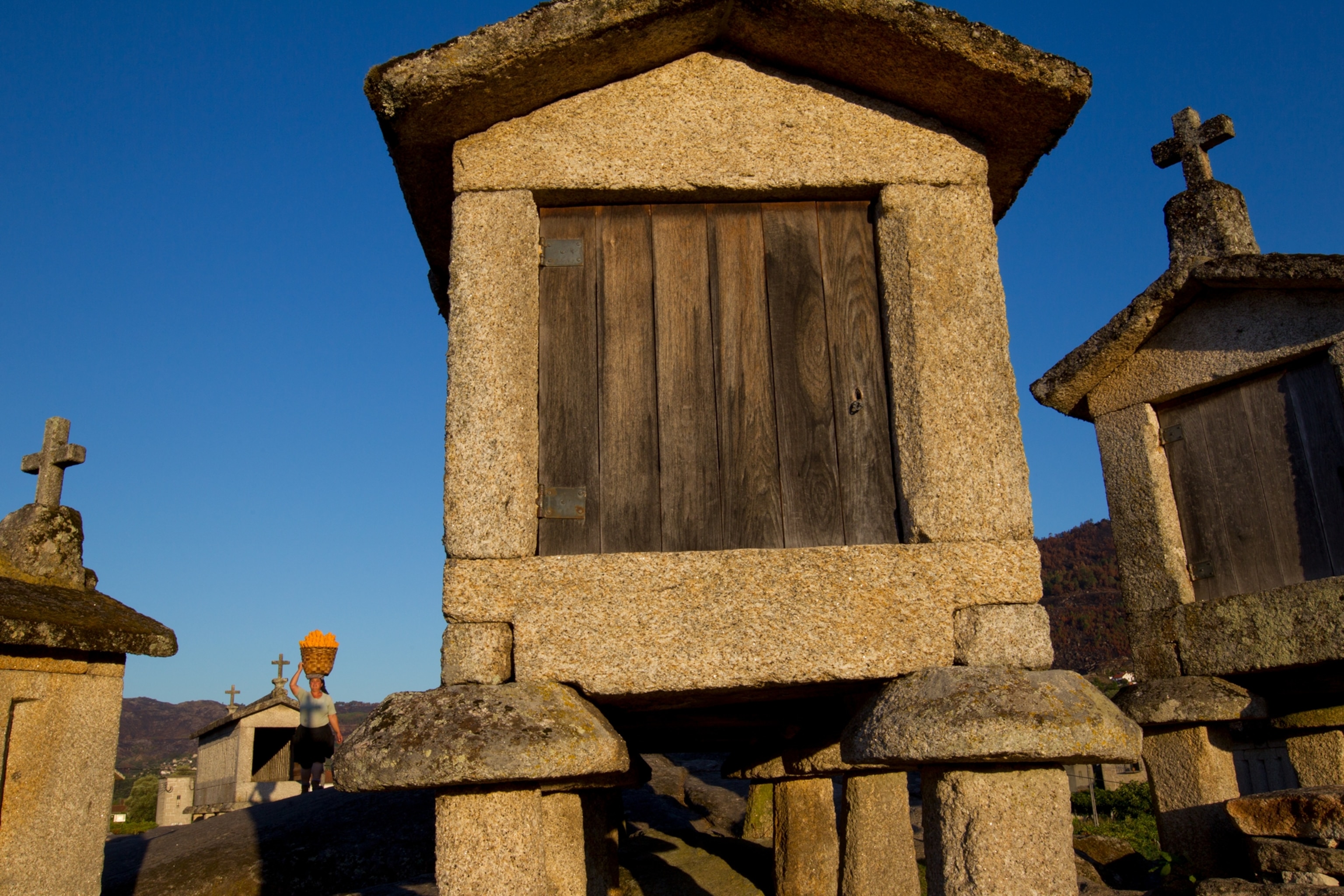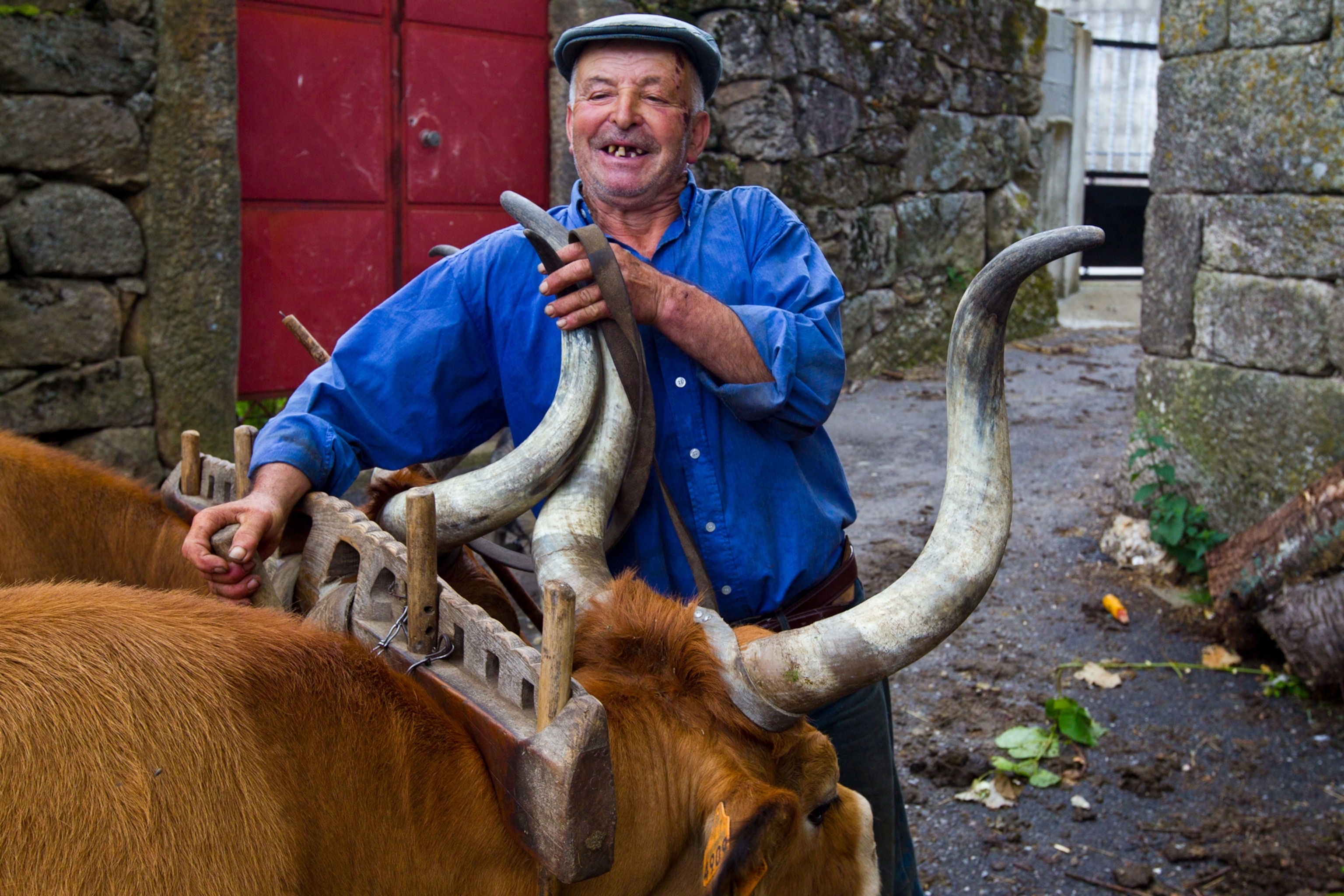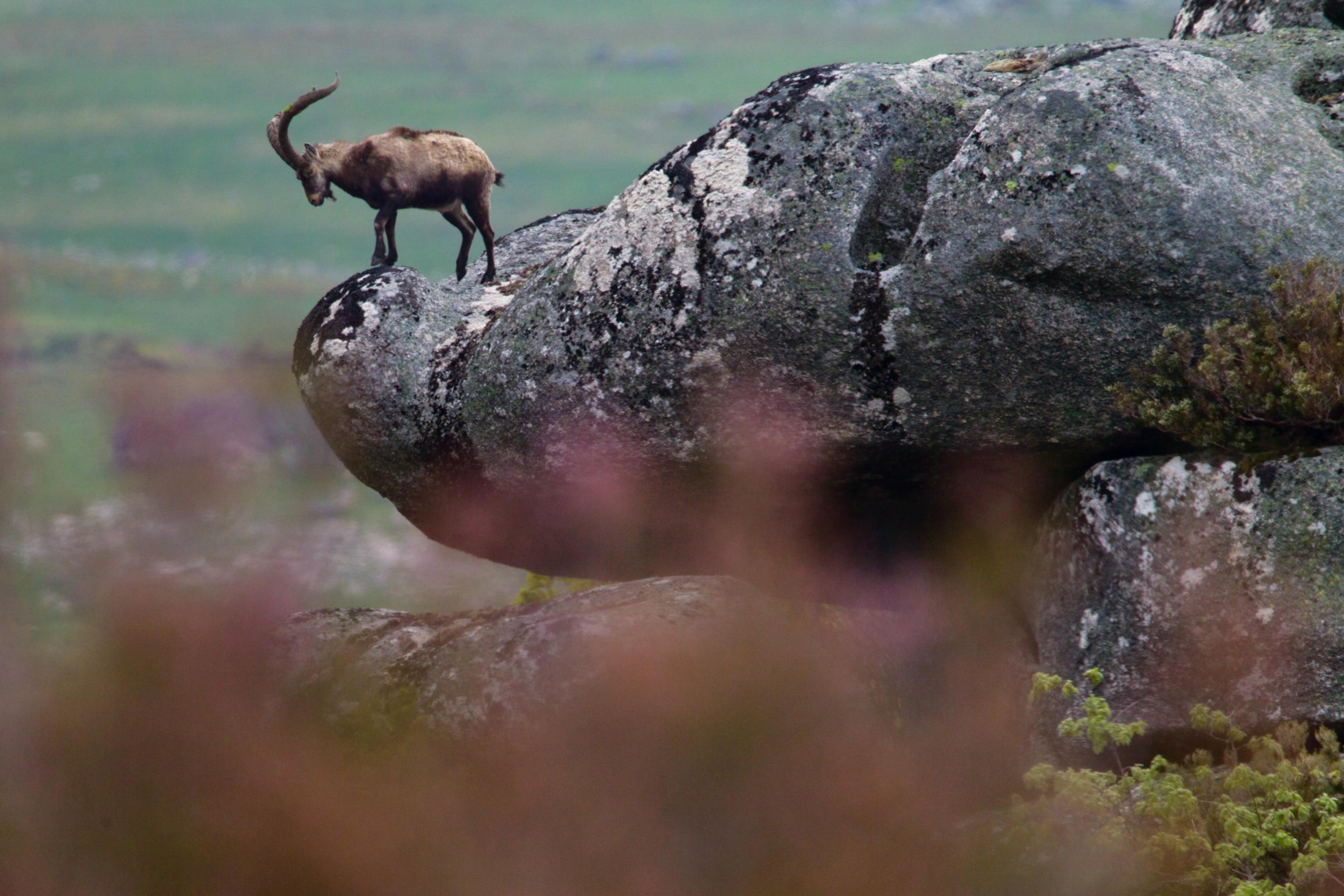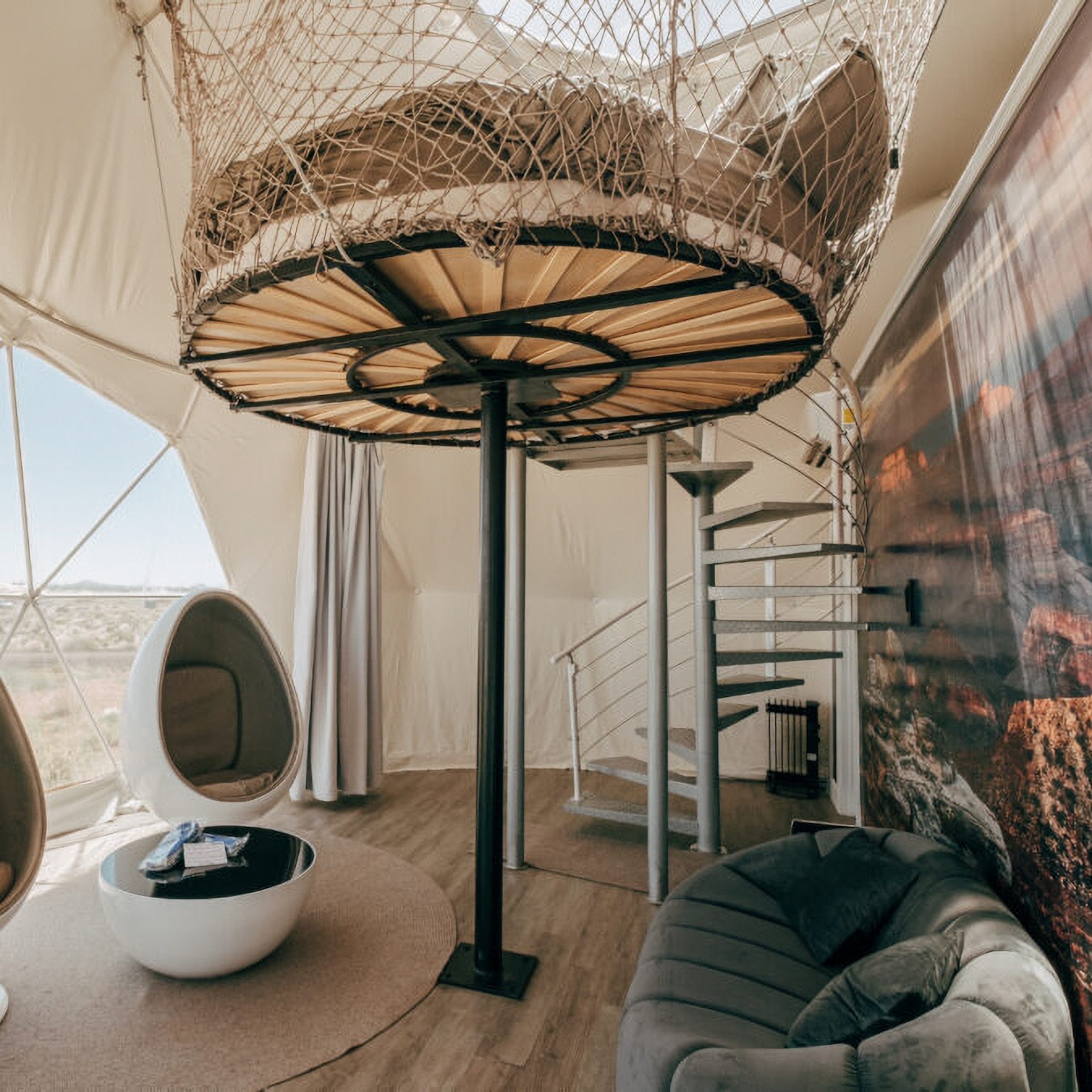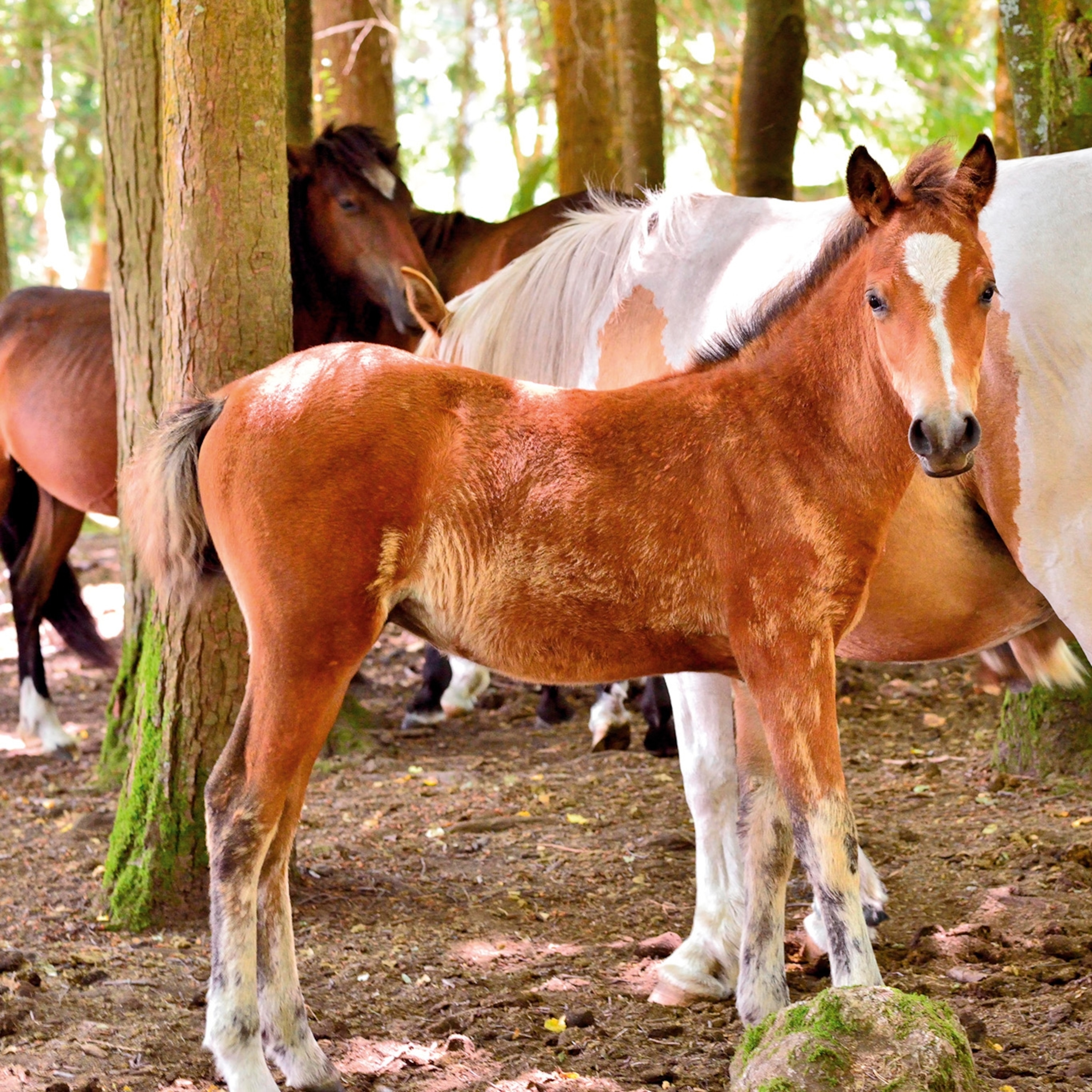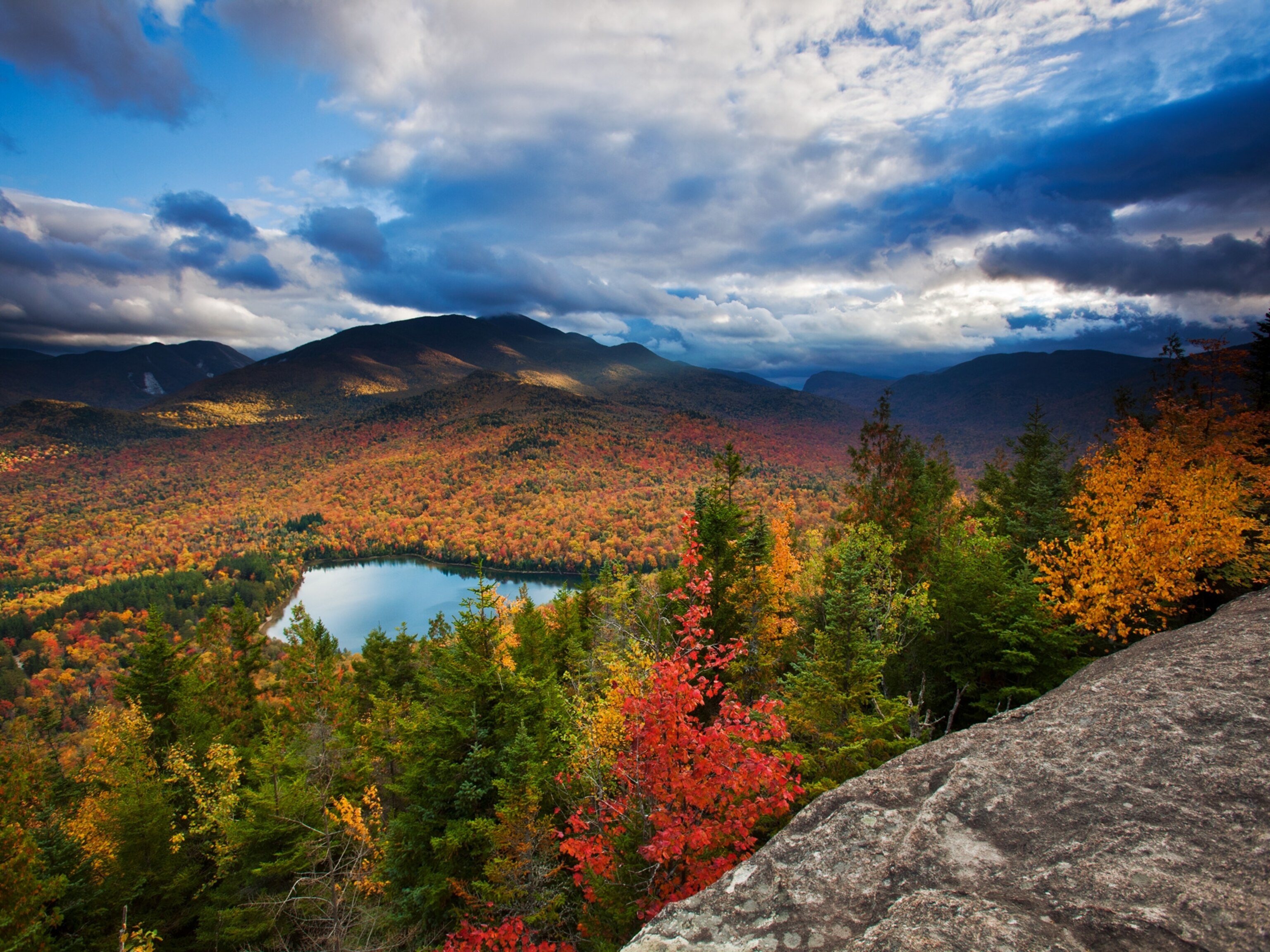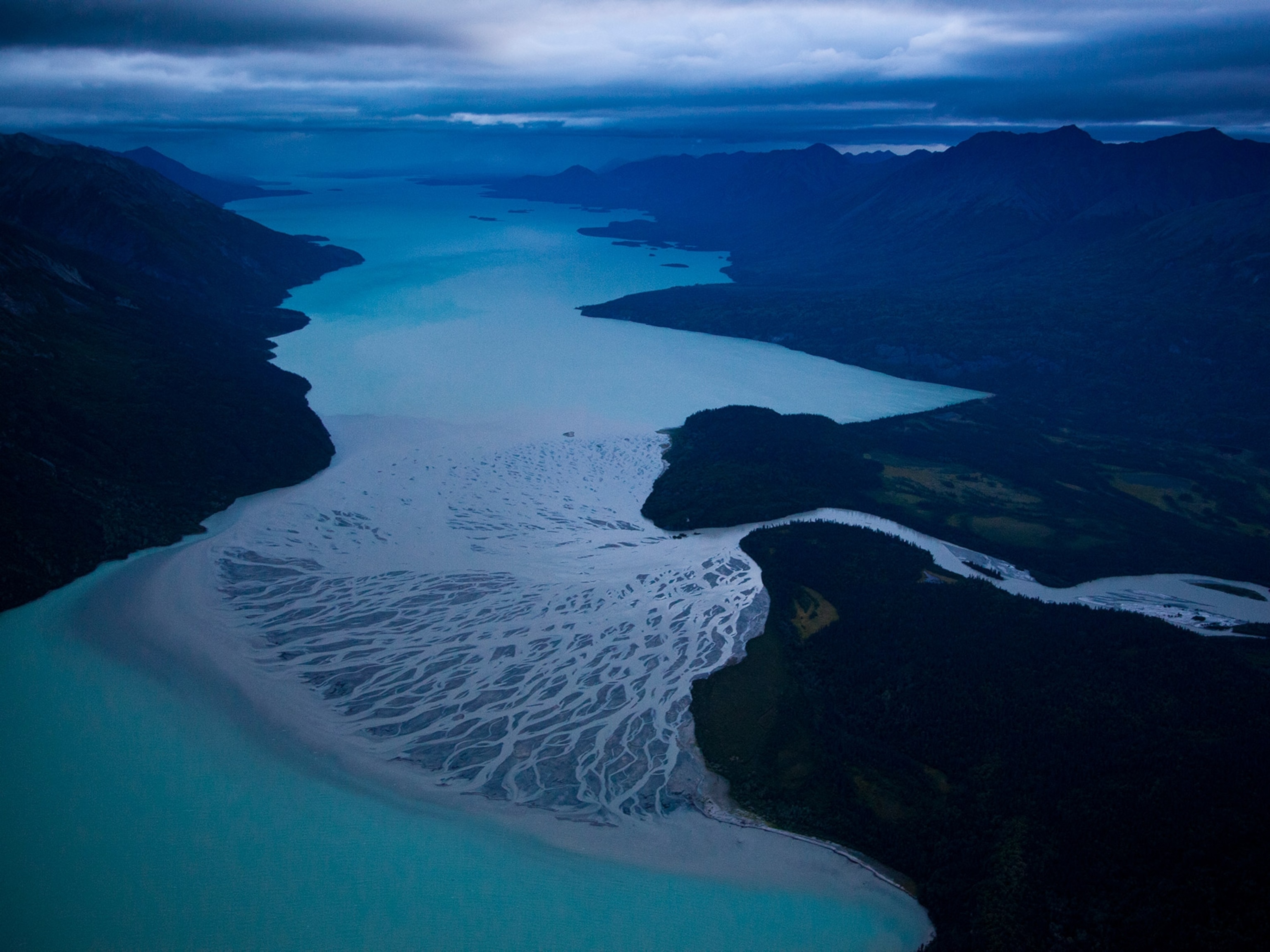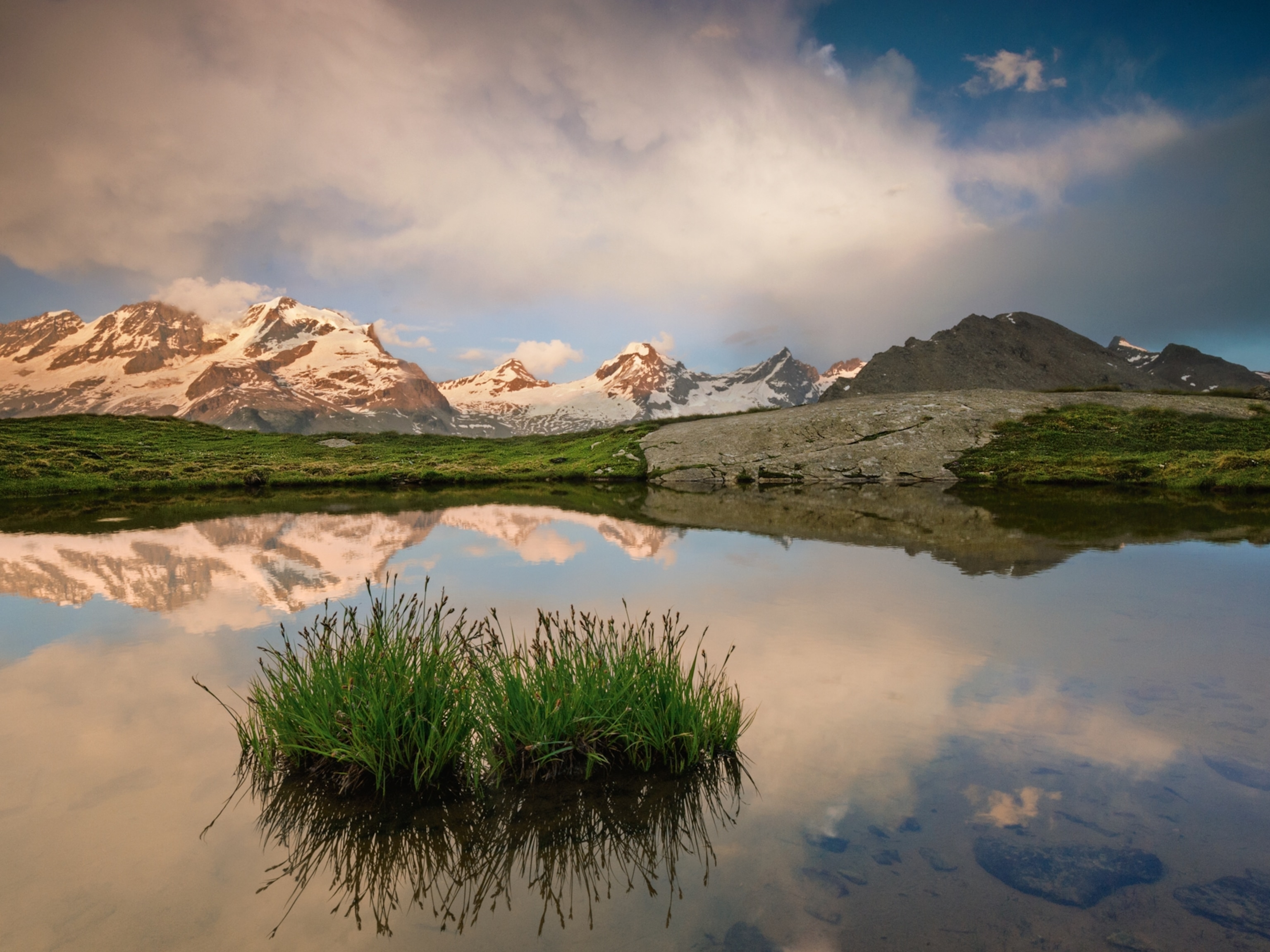The Delicate Balance of Portugal's Premier Park
Portugal’s first—and only—national park is a combination of natural wonders and local lifestyles.
At nightfall, biologist Francisco Álvares walks through the village of Pitões das Júnias, in northern Portugal, greeting old friends. Two women in widow's black touch his arm sociably as he passes the street corner where they sit singing folk songs to each other. He nods to a pretty blond teenager who has just penned up her father's 200 goats for the night, and exchanges gibes with a cowhand driving his long-horned cattle home from the fields.
At the edge of town he stops and looks westward, where patchwork fields melt into dense oak forest, then rise into sharp granite peaks. He cups his hands over his mouth, draws a breath, and makes a low, lonesome moan that rises to a fierce cry. The only reply is the wind soughing in the oaks and the occasional clonk of a cowbell. He calls twice more. Finally an answer comes, surprisingly close and loud, the same sad sound rising to exultation: the howl of a wolf. Álvares smiles and nods, then walks toward the sound, into the darkness of the trees.
"A wolf pack has denned in the hills above town for at least a decade," he says in a low voice as we walk. "They pick off village dogs, goats, and calves when they can catch them. Some years back they swept through town in the middle of the night, rounded up a donkey that had been left untied, drove it out of the village, and killed it."
The village of Pitões das Júnias is in Peneda-Gerês, Portugal's first and only national park. At 270 square miles, it's small compared to sprawling parks such as Yellowstone, the world's first national park. But packed within its borders is a highly concentrated mixture of things wild and domesticated. Forty endangered Iberian wolves share the terrain with some 11,000 people, who live in more than 80 settlements formed long before the park was established in 1971. In fact, people and wildlife have lived in close proximity here since the Stone Age. Whether they exist today in delicate equilibrium or constant tension depends on whom you ask.
Tucked into a craggy corner of northern Portugal, hard against the Spanish border, Peneda-Gerês is carved by mountain ranges, rivers, canyons, gorges, and streams. Most villages are situated in the lower valleys, where the climate is milder and the terrain more accommodating to people and livestock. The park's wild heart is in the high country, a realm of rugged granite massifs, windswept moors, and bare uplands greened in places by stands of giant holly.
Álvares and I walk through the darkening forest surrounded by smells of moss, fern, and loam and the sound of flowing water, a constant companion in Peneda-Gerês. It rains more than a hundred days a year here, and many springs rise clear and cold in the highlands, seeping into peat bogs or flowing down the mountains in a crescendo of streams, rivers, and waterfalls.
The landscape has also been shaped by human beings, who have lived here since the Neolithic—as evidenced by massive rock monuments, called dolmens, that dot the moors. A Roman road traverses the forest, and medieval castles perch on rocky peaks. Elaborate terraced fields climb the hillsides where farmers have grown corn and wheat for centuries. Walk along a winding river course and you may come upon an abandoned monastery where generations of monks prayed and fasted or a shrine that still draws pilgrims. Many of these structures, lichen-patched and rain-smoothed and built from local rock, match their surroundings so well they seem to have grown up organically from the soil.
This harmony of landscape and history, of wilderness and civilization, has been strained in recent decades by the construction of vacation homes and hydroelectric dams inside the park, and one of the largest wind farms in Europe just outside the park's western border. Whether the park can endure this onslaught of modernity is a hotly debated question in local cafés, though it receives little attention in Lisbon.
As dusk turns to darkness, Álvares snaps on an infrared headlamp and we continue hiking into the hills. After 20 minutes of climbing, we emerge on the granite highland. Álvares howls a few more times, but the wolves that den up here are nowhere to be seen or heard.
We roll out our sleeping bags in a little grassy swale among the boulders. The stars are out, brilliant as a desert sky, the Milky Way dense and luminous. Three or four times during the night the wind picks up, fog blows through, and light rain falls. Sudden weather changes are common, especially in the highlands.
The next morning we wake to the thump of hooves. A semiwild stallion paws the ground and looks at us suspiciously while his herd grazes behind him. The sky is brilliant blue, and in the orange glow of morning every outline—the crags around us and the higher peaks westward, the forests to the east and south, even the distant turbines of the wind farm—have a fresh-minted sharpness.
Many parks celebrate pure nature, but Peneda-Gerês is memorable for its juxtapositions—wolf dens within sight of human homes, ancient villages in the shadow of wind turbines. If the park's delicate balance ever fails, the world will lose a treasure far out of proportion to its size.
